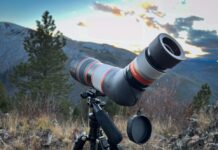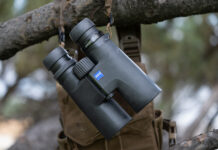I have always preferred roof prism binoculars for hunting. Binocular manufacturers can more easily make a sturdy, waterproof binocular using the inherent construction advantages provided by an inline, internally focussing roof prism binocular.
The rub is binocular manufacturers can more easily make a better-performing binocular using the simpler porro-prism design.
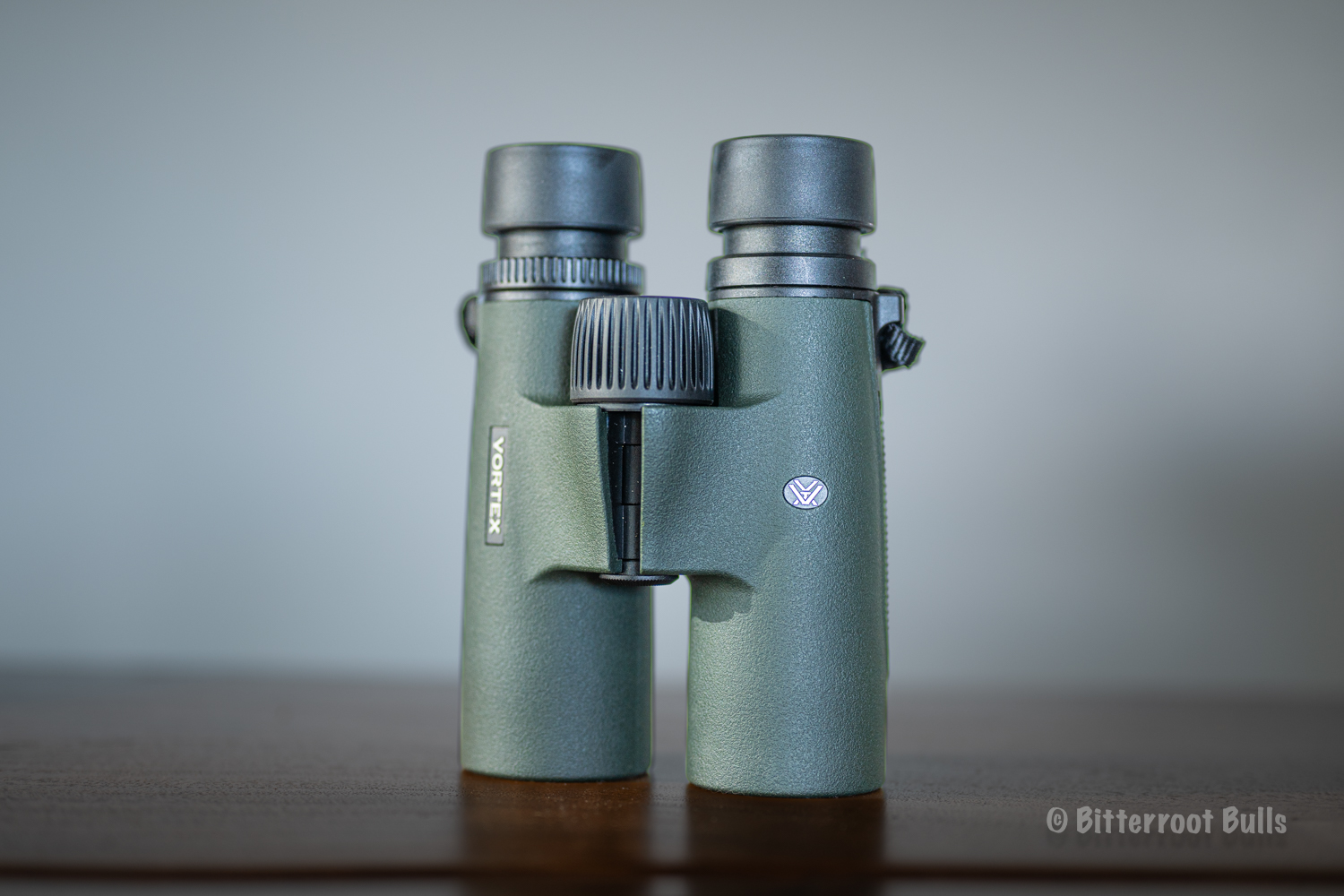
Vortex attacks the bargain optics category with the new Triumph HD
Vortex Triumph HD 10×42
In my evaluation, binoculars fall into four main categories:
- Bargain Level: This category includes binoculars that retail for less than $150.
- Entry Level: These binoculars are in the $250-$500 range. They often have acceptable optical performance, but durability can be iffy, and aberration control is mediocre.
- Mid Range: These binoculars are in the $800-$1500 range. These binoculars generally have notably better images than entry level binoculars and much better aberration control. The build quality is very good. The best of this range are very close to the high end binoculars in optical quality with small concessions in one category or another.
- High End: These binoculars are in the $2000-$4000 range. High end binoculars have few flaws, and those flaws that exist are very small. They are very bright, very sharp, and well corrected.
When I recommend hunters options in the various binocular categories, I don’t usually recommend roof prism binoculars in this category. Roof binocular build quality is suspect at the bargain level. Optical performance is generally poor, with low contrast, low apparent sharpness, poor aberration control, and frequent collimation issues.
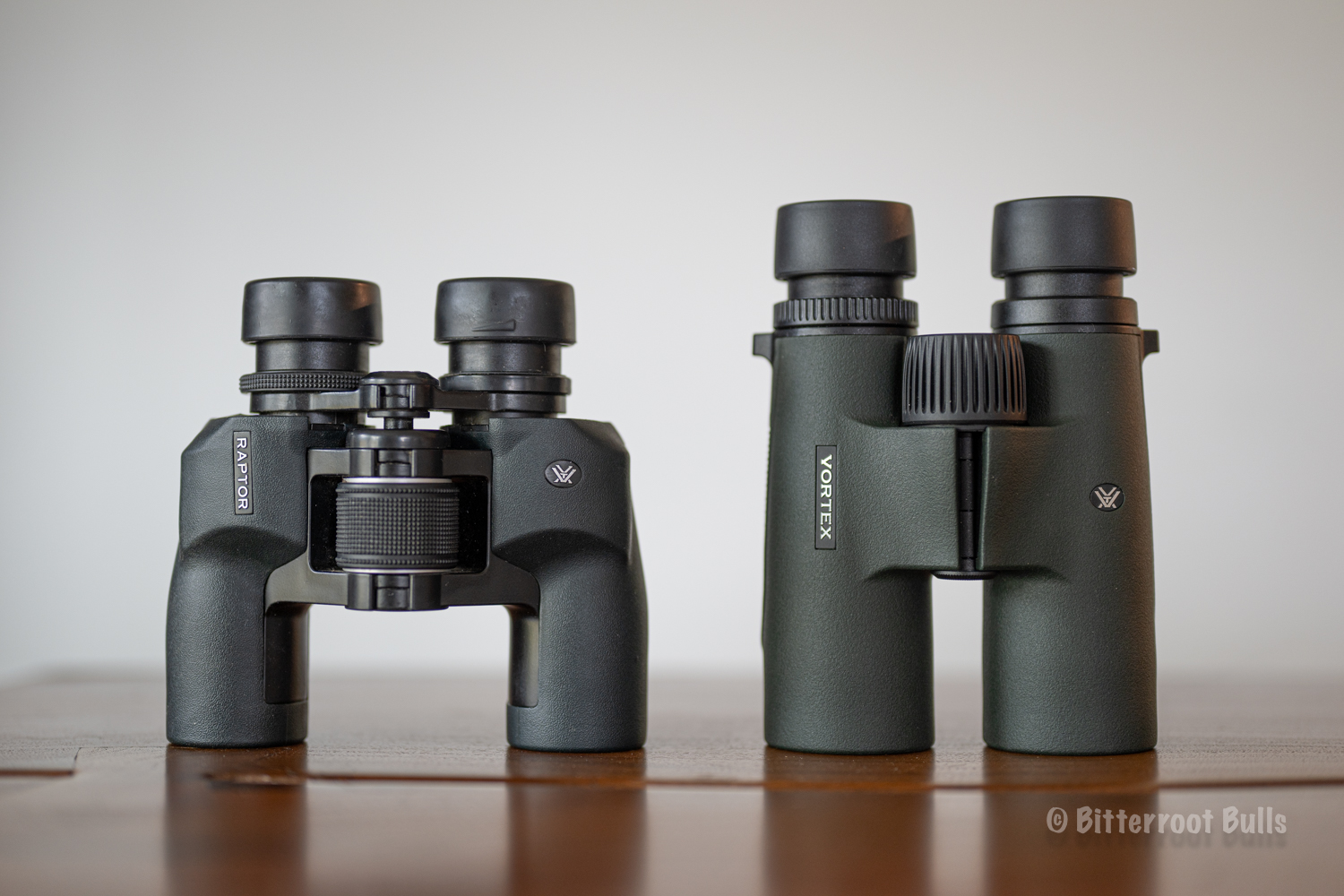
Bargain Porro vs Roof Prism Binoculars
I have recommended porro prism binoculars in the bargain category, however. In fact, I bought a set of 8.5X32 Vortex Raptor porro prism binoculars for my youngest as his first binocular. He has been happily using them for the last three years. Why? Porro prism designs are simpler and easier to get better performance out of a lower price point. The Raptor has decent optical performance at the bargain basement price of $99. The downside of inexpensive porro prism binoculars is they aren’t as well sealed or generally as durable as a roof prism binocular. In the case of my son’s Raptors, the build quality has led to a loosened hinge tension and diopter adjustment that has migrated from center. They still work and the image is still good, but they will probably be sent to Vortex for inspection in the near future.
I had resolved that this was just how it was with bargain optics. If you want a useable binocular in the bargain category, you will have to use a porro bino and deal with porro bino issues. Vortex had different ideas, however, when they released the new Vortex Triumph HD 10X42 binoculars. A roof prism 10X42 at $100? Wait, it comes with a bino harness? It sounds too good to be true. I snuck a look through a prototype last winter and was pretty surprised. The image seemed pretty good at first glance, but I needed to take a closer look. I got my chance to do just that this past summer.
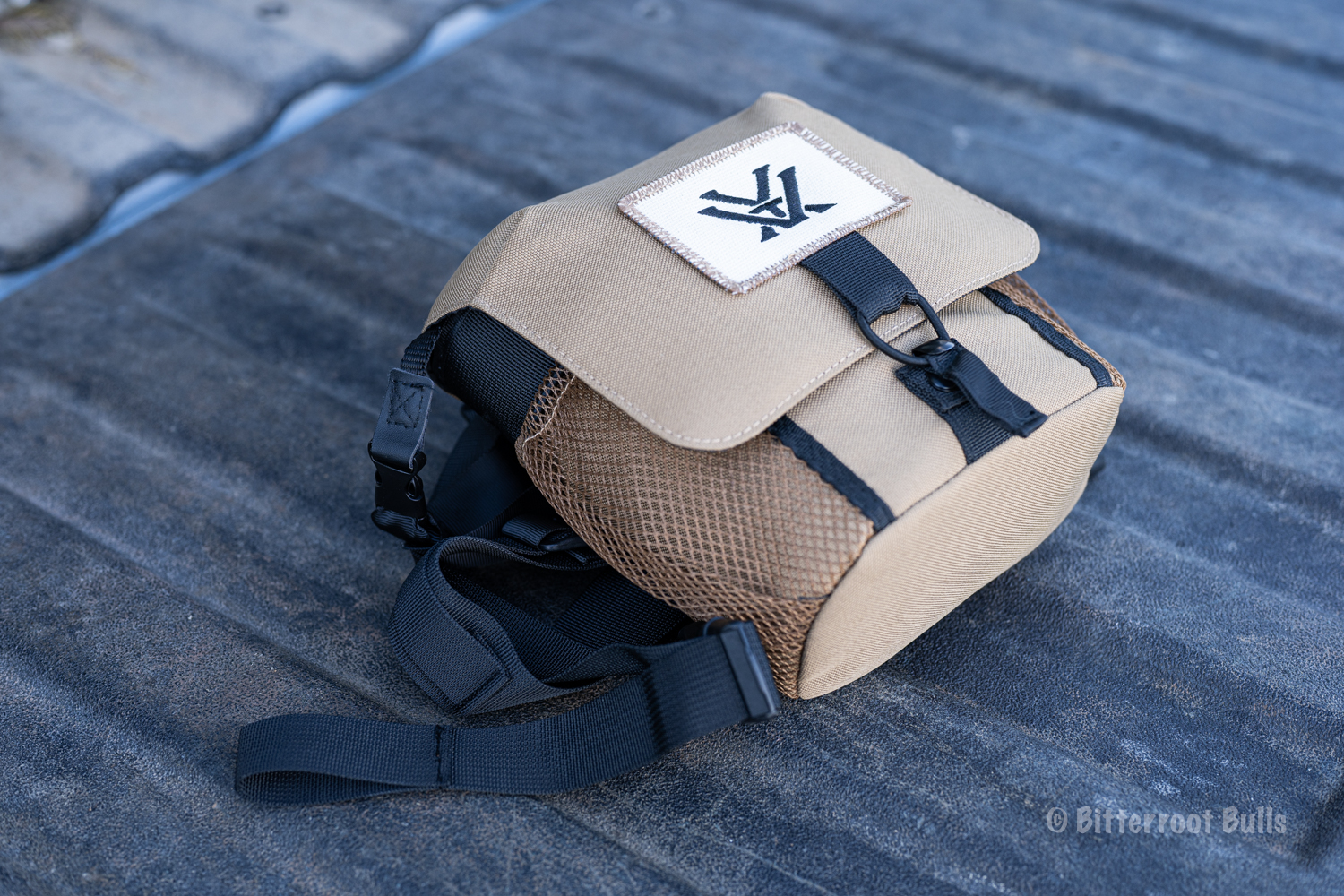
Triumph HD 10×42 Specifications
- Magnification 10x
- Linear FOV 334’ at 1000 yards
- Angular FOV 6.4 degrees
- Eye Relief 17 mm
- Height 6.1”
- Width 5.0”
- Weight 22.9 oz.
- Close Focus 15.3’
The specs were not bad. The FOV is pretty wide, and the weight is really light. Close focus isn’t great, but it is still good for hunting.
Technology
Vortex advertises the Triumph HD with the following goodies:
- HD Optical System
- Fully Multi-Coated Lenses
- Rubber Armor
- Nitrogen Gas Purged (fog proof and waterproof)
- Tripod Adaptable (1/4-20 socket)
- Twist Up Adjustable Eyecups
- Center Focus Wheel
- Shockproof
Again, not too bad. I lined up the Triumph next to the Raptor and gave it a good checking out. Read more on the Vortex website here.
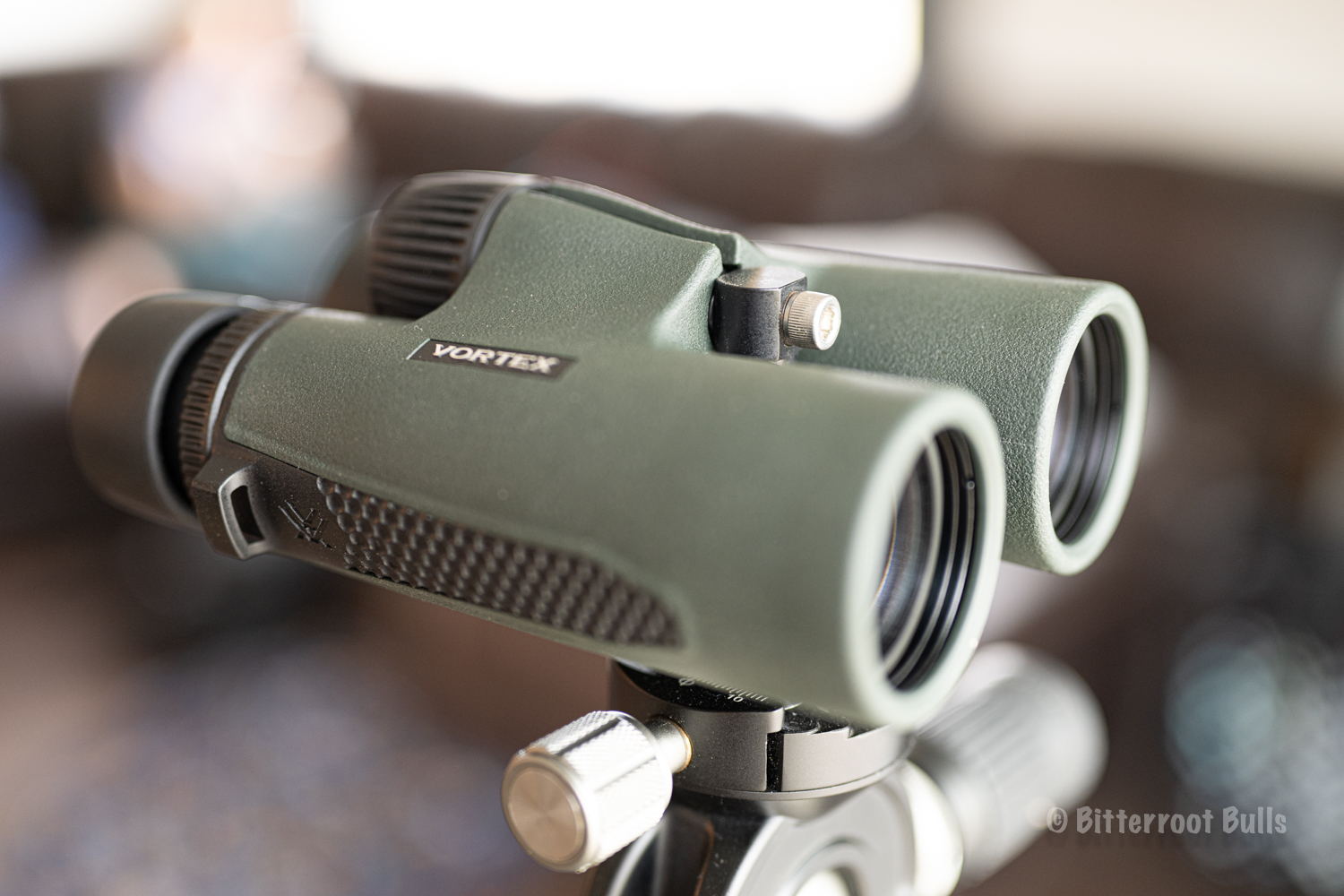
Build Quality
I weighed the Triumph without accessories, which came out below the listed spec at a measured 21.05 ounces. This is extraordinarily light for a 10X42 and nearly as light as the diminutive Raptor’s 18.67 ounces. Much of the weight savings come from the Triumph’s polycarbonate frame.
The rubber armor isn’t quite full, with plastic areas extended down the barrel sides from the strap loops. Eyecups have three eye-relief positions, are not removable, and are composed of a thin, plasticky rubber. The eyecups didn’t fit me great, and made it tough to eliminate side light, especially with the eye relief that felt shorter than the listed 17mm.
The center bridge is threaded 1/4-20 and easily accommodates tripod adaptation. The rubber focus wheel is surprisingly smooth and well-damped. The focus knob focuses from close focus to infinity in about 1 1/2 revolutions but has another 1/2 revolution past infinity as well.
The Triumph feels light but still solid. It doesn’t have the premium feel of higher priced binoculars, but doesn’t feel fragile either. It definitely has a better fit and finish than competitors in the price range. Accessories include a rubber rain guard, padded strap, objective caps, Glasspak harness, and a cleaning cloth.
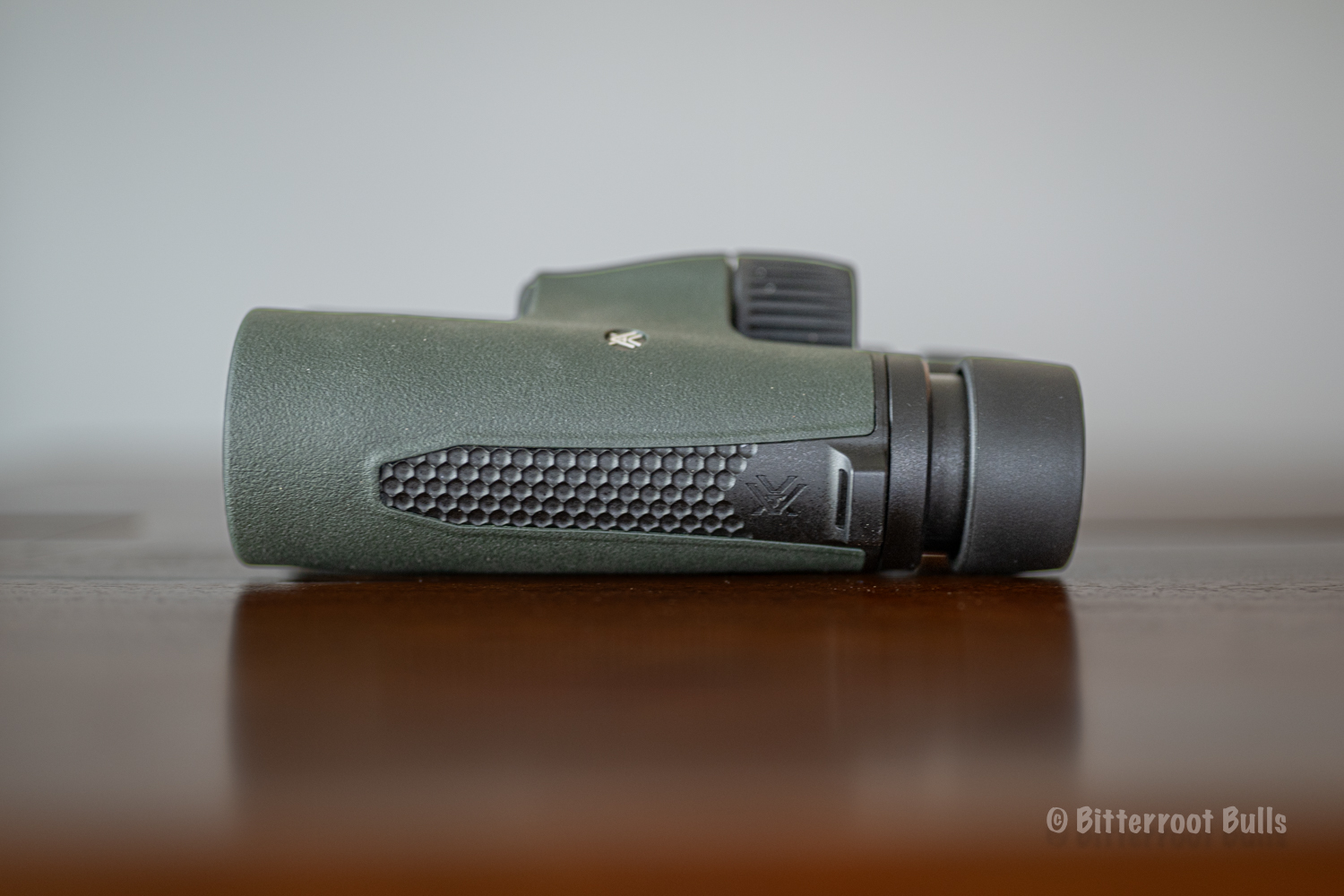
Optical Performance
At 334 ft./1000 yards, the Triumph’s field of view is pretty standard for a 10X42. And, not far off from the 8.5X32 Raptor’s 390 ft./1000 yards. Center field sharpness was good. I used a resolution chart to compare to the Raptor, and I was able to resolve one smaller chart element with the Triumph vs. the Raptor. This was likely due to the 1.5X magnification advantage of the triumph over the Raptor.
Contrast is sufficient and similar to the Raptor. Colors were fairly vibrant for this class of optic. Blur occurs fairly rapidly when moving from the center field to the edge, with the edges being substantially blurry. The Triumph will not compete with a good Mid Range or High End binocular in these categories, but it certainly held its own against the porro prism Raptor, which is more than I can say for other roof binoculars in this price range.
Minor color fringing from chromatic aberration is visible in the center of the field, and it increases to quite noticeable at the edge. Again, this was really similar to the Raptor. The Triumph HD’s pincushion distortion is pretty apparent when looking at straight lines.
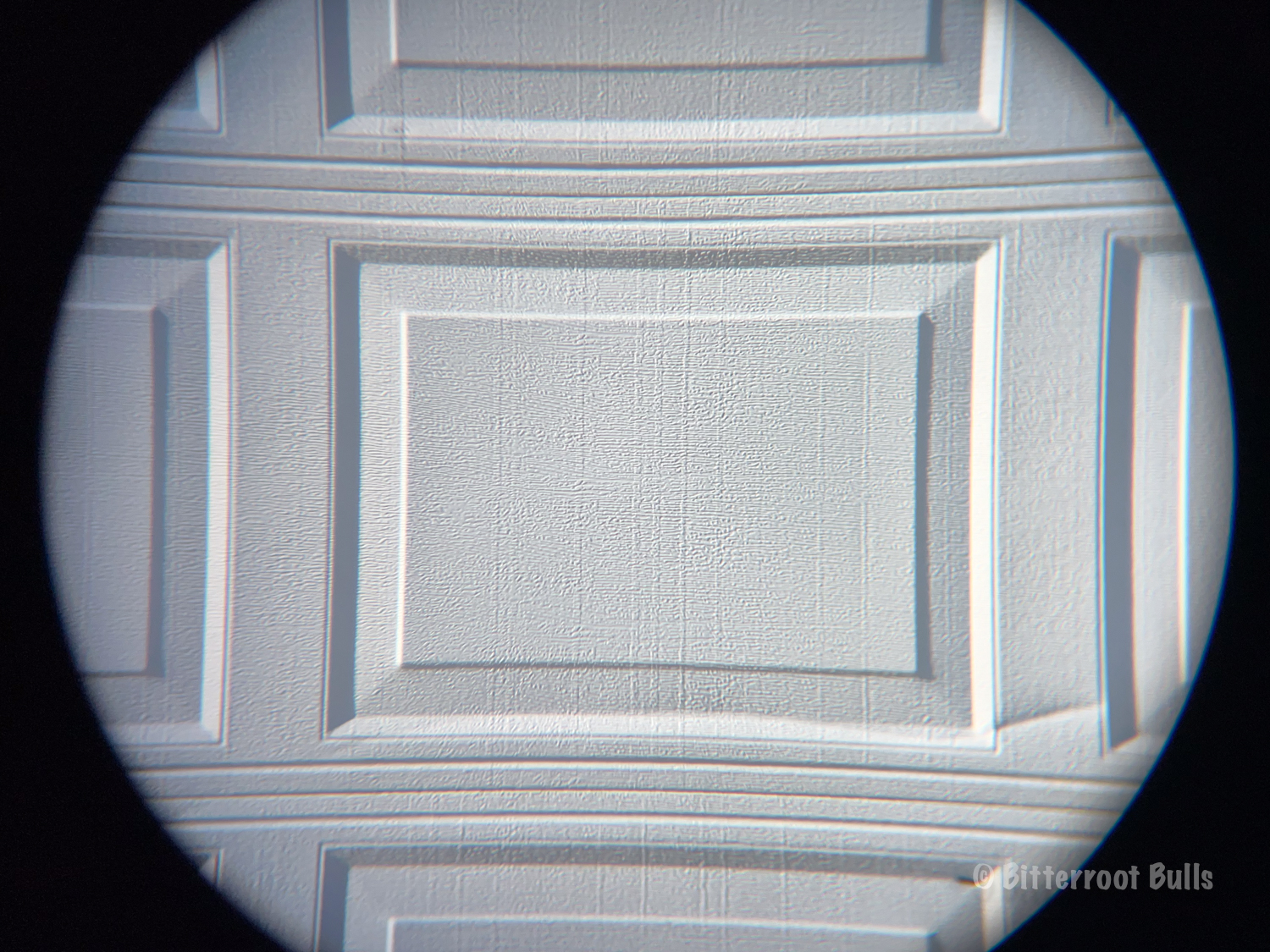
Like most budget optics, the Triumph HD showed significant glare when glassing into the sun, with reduced contrast and flaring.
Punching Above Their Weight Class
This may sound like I’m being pretty critical of the Triumph HD, but I actually found its optical performance encouraging. It easily outperforms any sub-$100 roof prism binoculars I have tried before and reminds me a lot of $250-$300 binoculars like its own Diamondback sibling. I preferred the performance of the Triumph to the Raptor. Although the new budget binocular’s optical performance wasn’t perfect, it was still suitable for hunting.
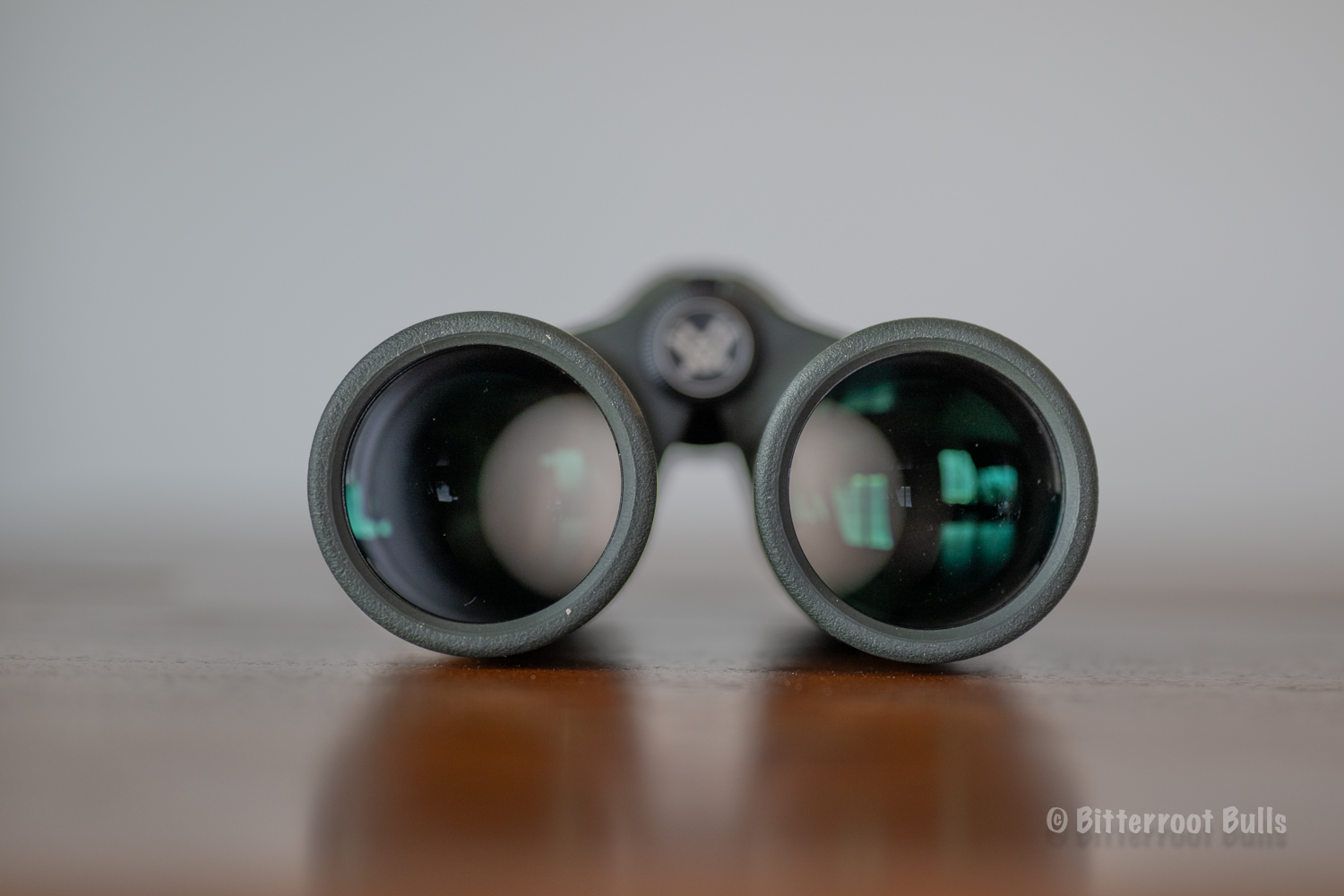
Field Performance
I used the Triumph for several different tasks, including watching the Women’s College World Series from the stands and scouting for mule deer in Montana. The ultralight weight of the Triumph is pretty noticeable in the field. I could barely feel them in the harness. The optical compromises of the edge performance weren’t as noticeable in the field, and the centerfield performance was certainly good enough for serious glassing. The very good focus wheel made achieving best focus a breeze.

While I had no collimation issues, I struggled with eye placement. Getting the best image required precise eye placement, and the combination of eyecup design and eye relief made this difficult for me.
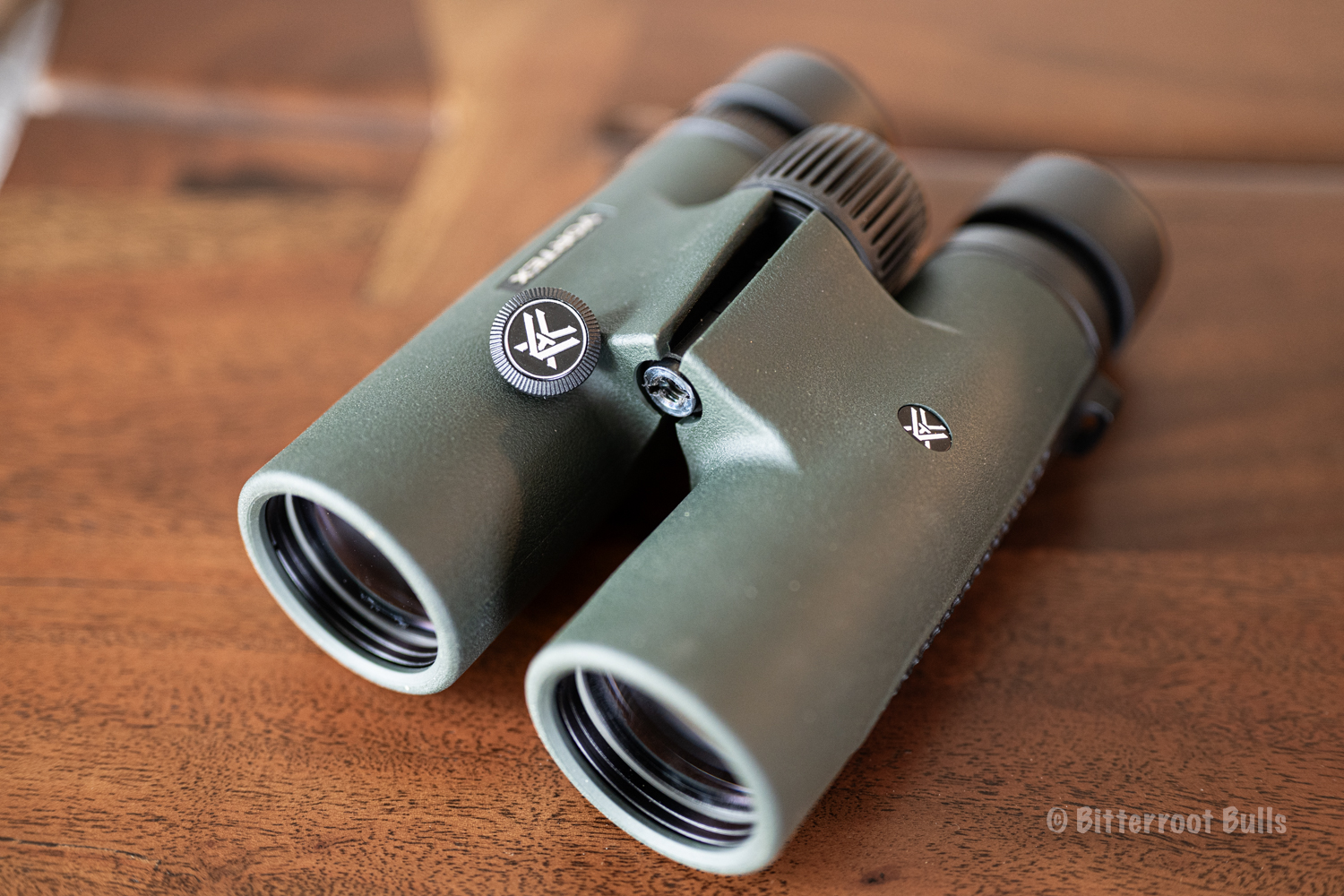
Warranty
Warranty is important in hunting optics at all price points, but perhaps it is most important at the entry-level, where materials and construction aren’t at the level of higher-priced options. Vortex leads the industry with a “VIP” warranty that covers the product for any damage or failure, no questions asked, and is fully transferrable. Pretty amazing for a $100 binocular.
Pros and Cons
Pros:
- Inexpensive
- Includes chest harness
- Class leading optical performance
- Value
- Worry-free warranty
- More durable build quality than budget porro binoculars
Cons:
- Polycarbonate frame
- Edge performance
- Cheap eyecups
- Optical aberrations
Who is the Triumph for?

I thought about who should look at the Triumph HD for hunting. Vortex says it is a good option for a backup “truck” binocular. I think that is a great use case for the Triumph. I also really like it as a “big kids” binocular. While the Triumph isn’t a dedicated child binocular like Vortex’ recently introduced Bantam binocular, the minimum interpupillary distance of 55mm will suit a lot of small faces and grow with the youth hunter. The optical performance is good enough, the investment is low, and the warranty provides peace of mind. I think enough of the Triumph for this use; I will replace the Raptor with the Triumph for my son going forward.
Hunters on a shoestring budget for their western hunt should also look at the Triumph. It is good enough to hunt with and leaves a lot of room in the budget to make a hunt actually happen. The sage advice to buy the best optics you can afford still stands, but I would rather hunt with the Triumph than burn a hunting season (or more) just to save for a higher priced binocular.
Conclusion:
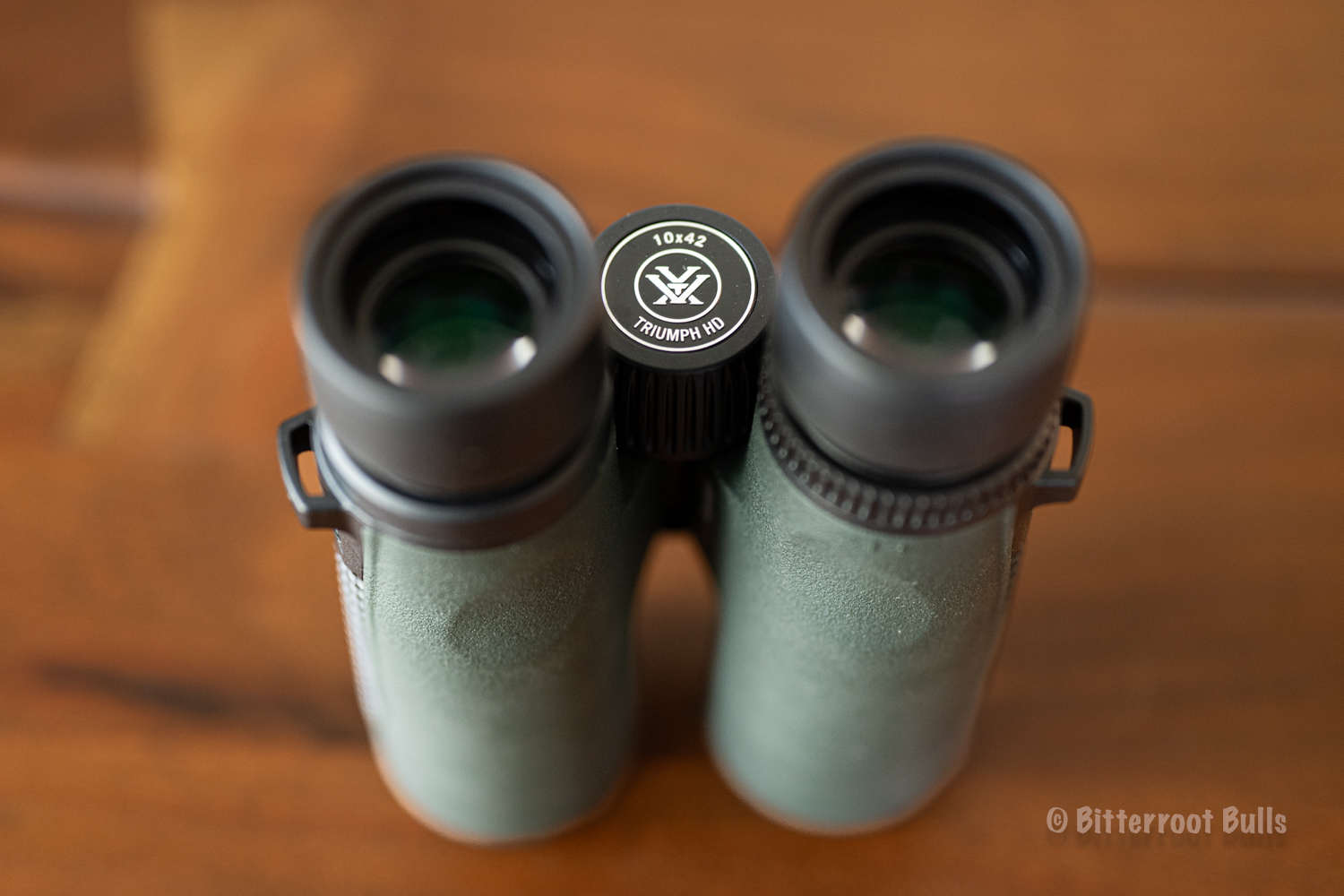
The Triumph HD can really be seen as a triumph for Vortex. The price point is super low for a binocular that provides sufficient optical performance for hunting. It doesn’t compete optically with midrange binoculars, but it does push the performance level for roof prism binoculars in the Bargain class. Hunters that are reasonable with their expectations for $100 binocular performance should be pleased. The Triumph HD comes with a harness and is backed up by the best warranty in the business.
Comment or ask Matt questions here.
Continue reading our optics reviews.















